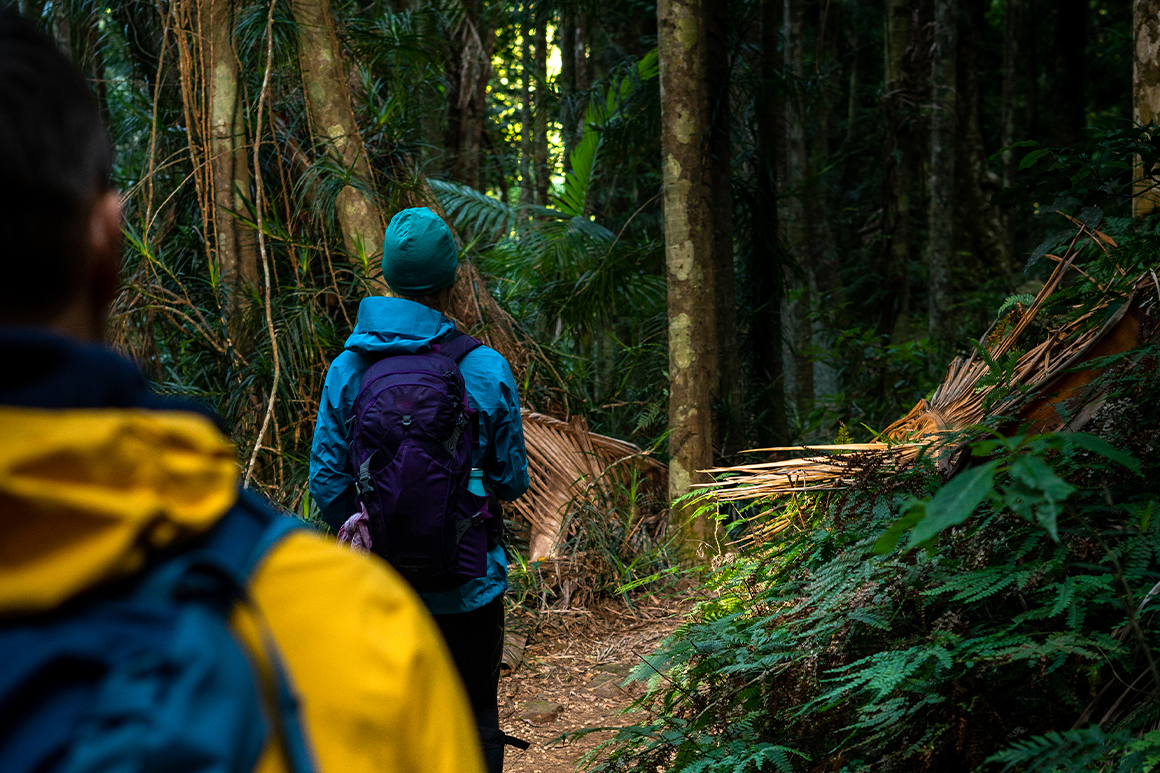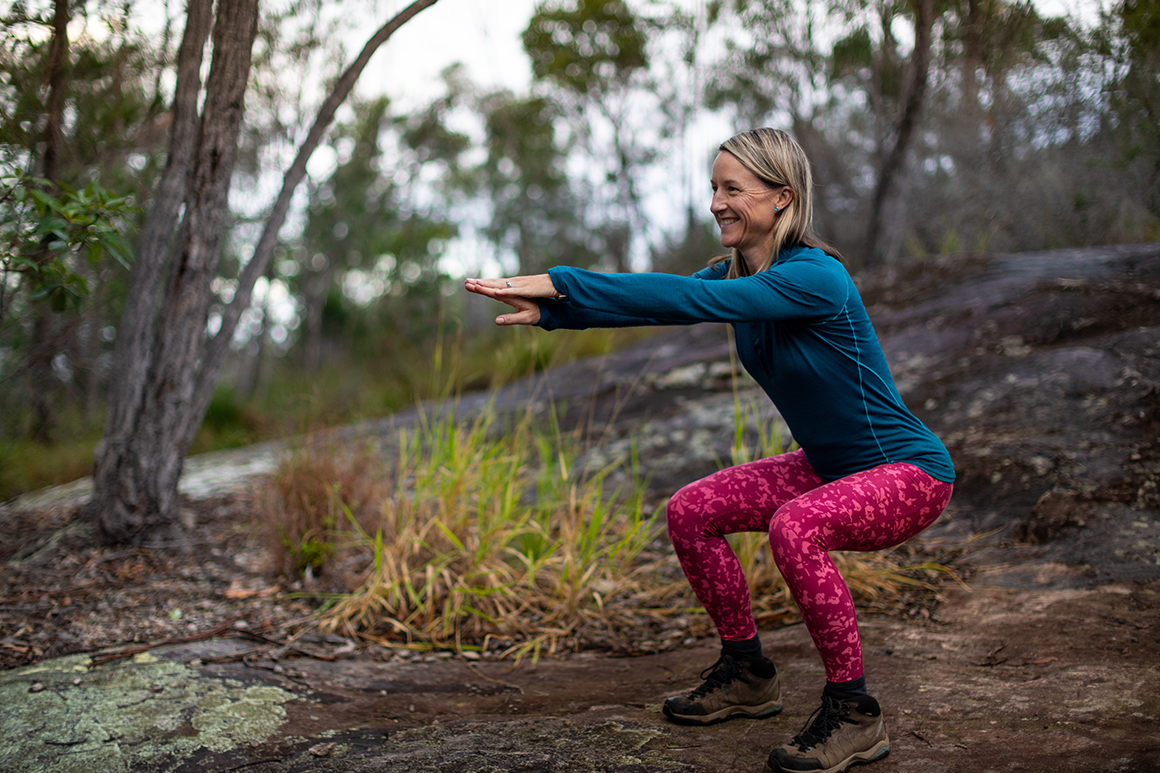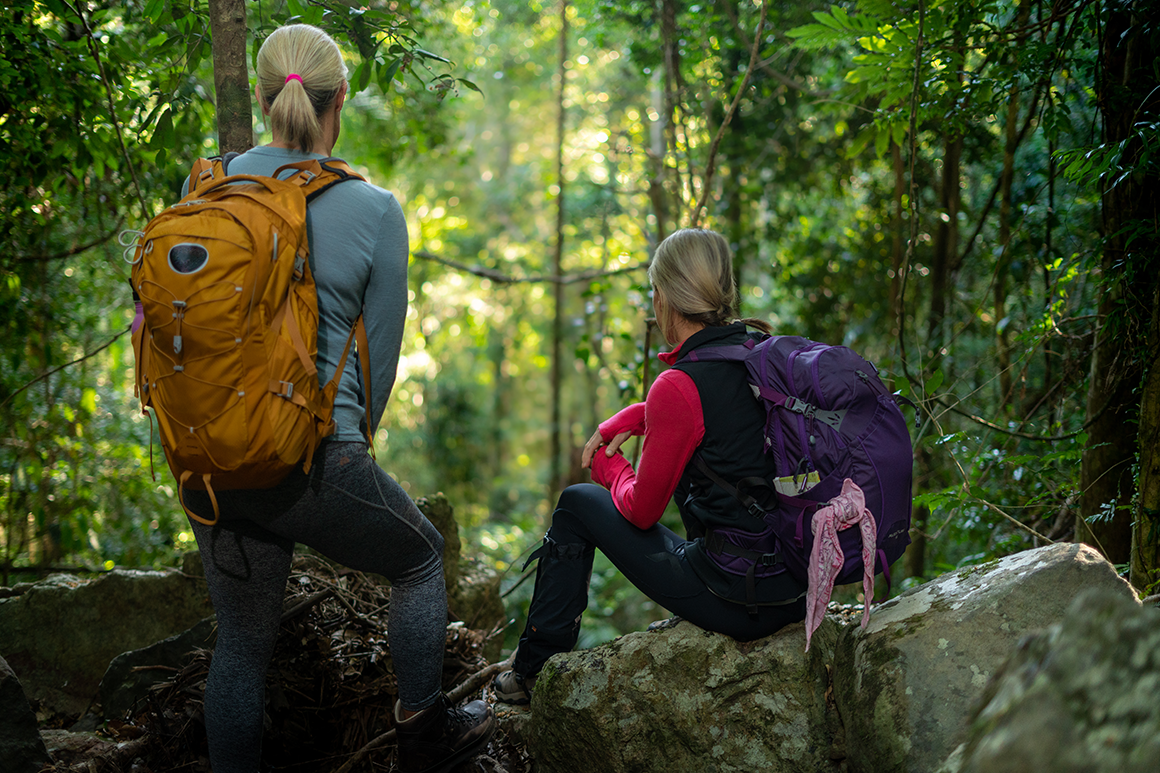- Categories:
Winter, surely, is best spent snuggling under the covers or glued to the couch binge-watching your current favourite shows, right?
Wrong! Winter is a fabulous time to breathe in the crisp air, rug up in your layers and spend some time in nature.
Conditions vary greatly across Queensland from north to south; and coast to inland, but regardless of location, winter is usually recommended as the best time to hike, thanks to cooler temperatures and lower rainfall.
So, here’s why we love winter hiking and our tips to make sure that you’ll love it too!
Why we love winter hiking

Winter hiking | Greg Cartwright © Queensland Government
Hiking in Queensland’s winter is exhilarating, invigorating and just plain good for you.
- You can enjoy crisp, blue-sky mornings, chilly but oh-so-fresh air and usually clear conditions so you can see for miles and miles…
- You can jump out of bed and head off as the morning light hits the trails because the sunrise is not as early as in summer.
- You can soak up natural sunlight for your regular dose of Vitamin D that is so necessary for general wellbeing.
- You can do your daily 10,000 steps without sweating as much as you do in warmer months.
- You get to wear earmuffs, scarves, mittens and leg warmers (well, maybe not leg warmers!), even if just for an hour or so before the day warms up!
How to make sure you love winter hiking too

Warming up before the hike | Greg Cartwright © Queensland Government
Consider these tips when planning your winter hike to make the most of your experience.
- Check sunrise and sunset times for the day of your hike. You will have fewer daylight hours than in summer, so you need to work out roughly how long your intended route will take and build in some contingency. Always carry a head torch, in case you take longer than expected and it starts to get dark.
- Prepare to be both hot and cold. Even if the morning is cold, it usually warms up to ‘t-shirt temperatures’ by midday. This means you need a beanie and gloves for the early morning, and you need to wear layers. Peel off your outer layers as you warm up and keep them handy for when the temperatures drop in the afternoon as the sun goes down.
- Carry a daypack that can fit all your gear. When hiking in winter you usually carry more gear and you’ll need space to store your extra layers when you start warming up. If you are day hiking, allow for a pack with around 35 litre capacity—enough space to fit in your extra layers, along with all the other essentials.
- Warm up first. You creep out of bed before sunrise, pull on your hiking gear and jump into the car. When you reach the trailhead, you get out eager to start hiking so you can watch the sunrise. Your body however, may protest! It will take your muscles a little longer to warm up in winter so start off slowly and do gentle stretching within the first few kilometres to ease into the hike.
- Take snuggly overnight gear. If you are contemplating a multi-day hike (remember you need to book your camp sites in advance), where you carry all your gear and camp along the route in remote locations, you need gear to cater for cooler temperatures. Again, this means that just like your clothing requirements, your gear may also weigh a little more, and take up more space. Include a warmer sleeping bag and some thermal layers in your packing list. Practise packing your gear in a full pack and training while wearing it, slowly increasing the weight in your pack over time, as you get fitter and stronger.
Where to go winter hiking

Hiking through rainforest | Greg Cartwright © Queensland Government
With over a thousand parks and forests across Queensland to choose from, deciding which hike to take might be hard. Here are a few suggestions to get you started.
Hike through peaks and valleys:
- Where: Gold Coast hinterland (Springbrook and Lamington national parks) and Sunshine Coast hinterland
- Expect: Misty morning views over the valleys, sparkling creeks and waterfalls along the trail, green rainforests and local cafes in country towns, for a cuppa after taking in the scenery.
Meander along scenic coastlines:
- Where: Burleigh Head National Park or Noosa National Park
- Expect: By the time the sun moves higher in the sky, you might even find it warm enough for a dip in the ocean.
Adventure out to the islands:
- Where: K’gari (formerly Fraser Island), Whitsunday Islands National Park and Hinchinbrook Island National Park
- Expect: Trails that lead you to sparkling blue ocean and lakes, and white sands.
Climb to the top of the world:
- Where: Bartle Frere trail, Wooroonooran National Park
- Expect: Queensland’s highest peak awaits if you want to train towards ‘bagging a peak’. Lots of steep climbing, but on a clear day you will be rewarded with 360-degree views over the Great Barrier Reef and Atherton Tableland.
Convinced?
Check out our website for more winter walk suggestions in Queensland National Parks.


